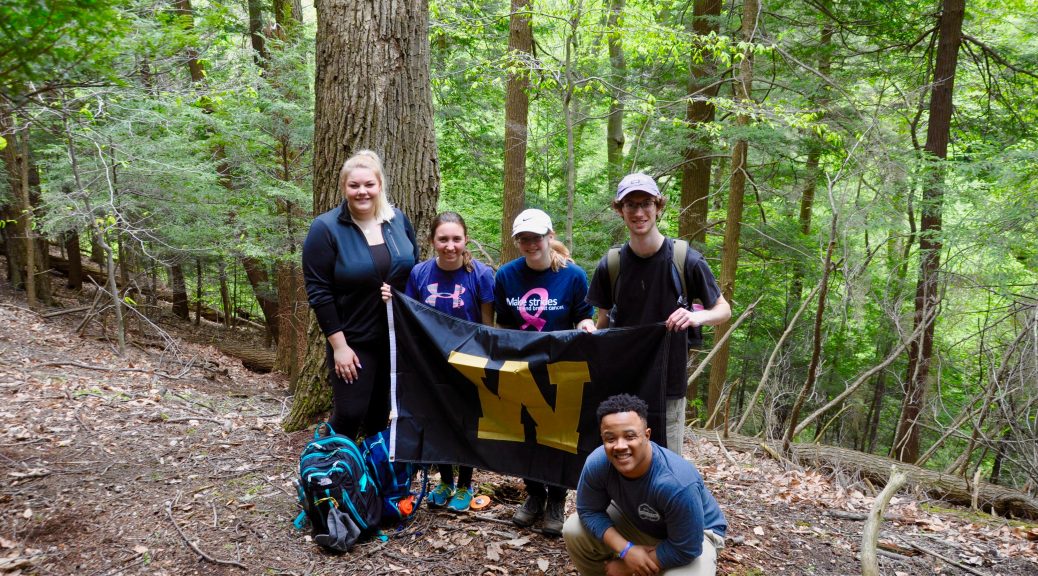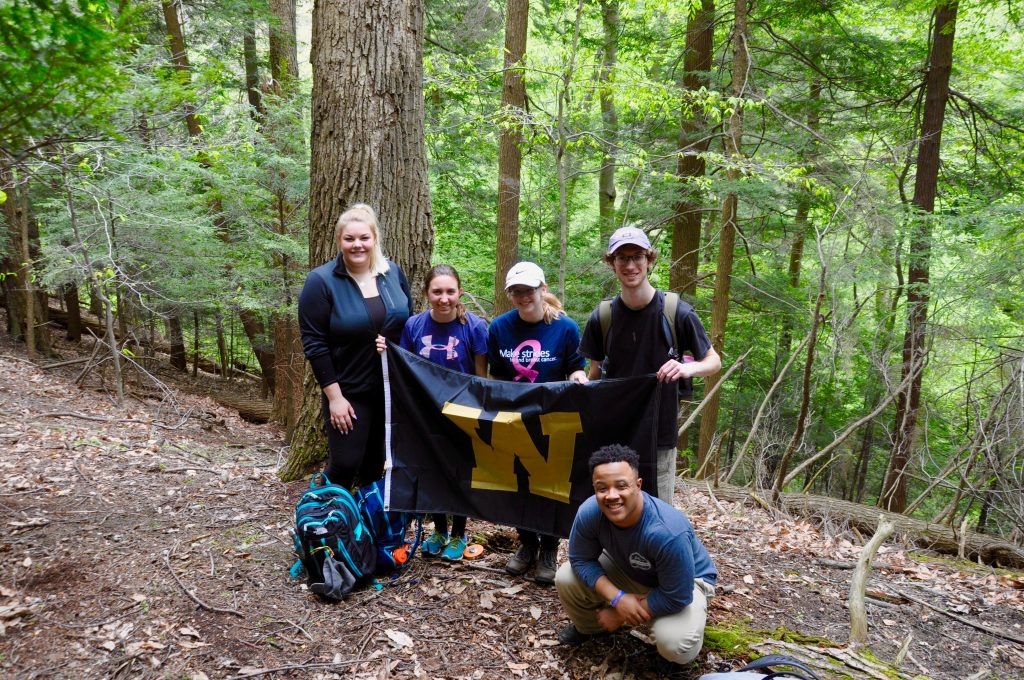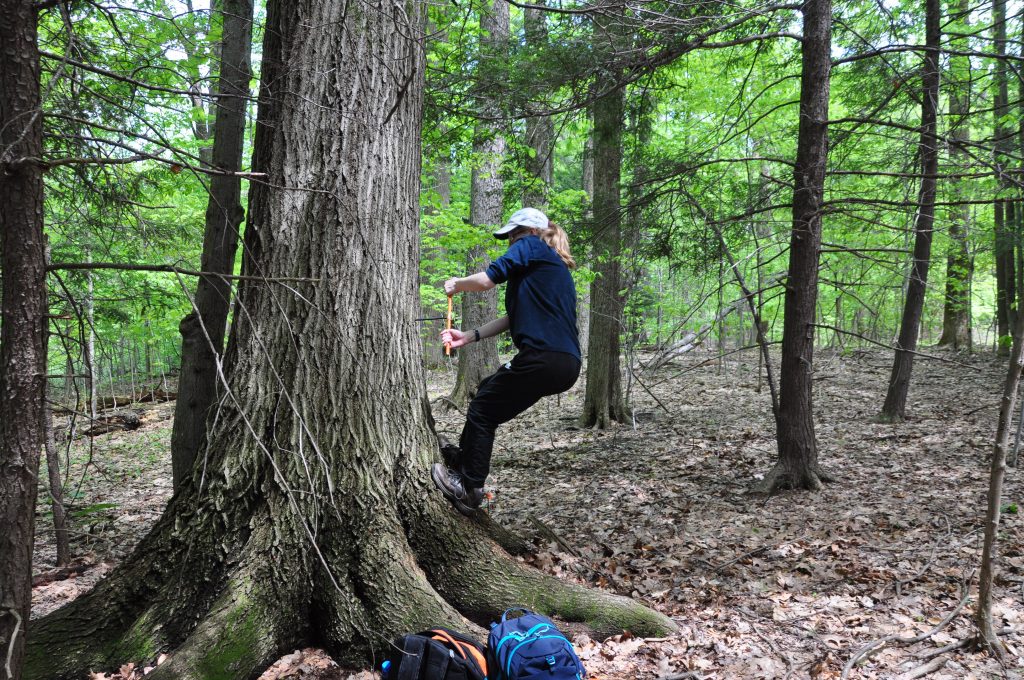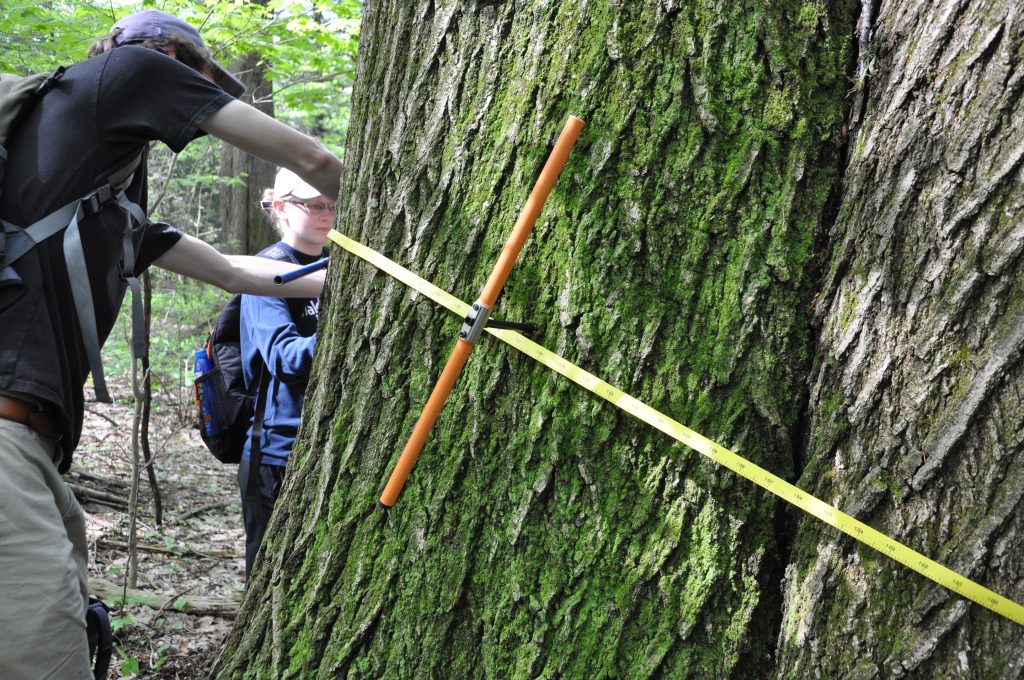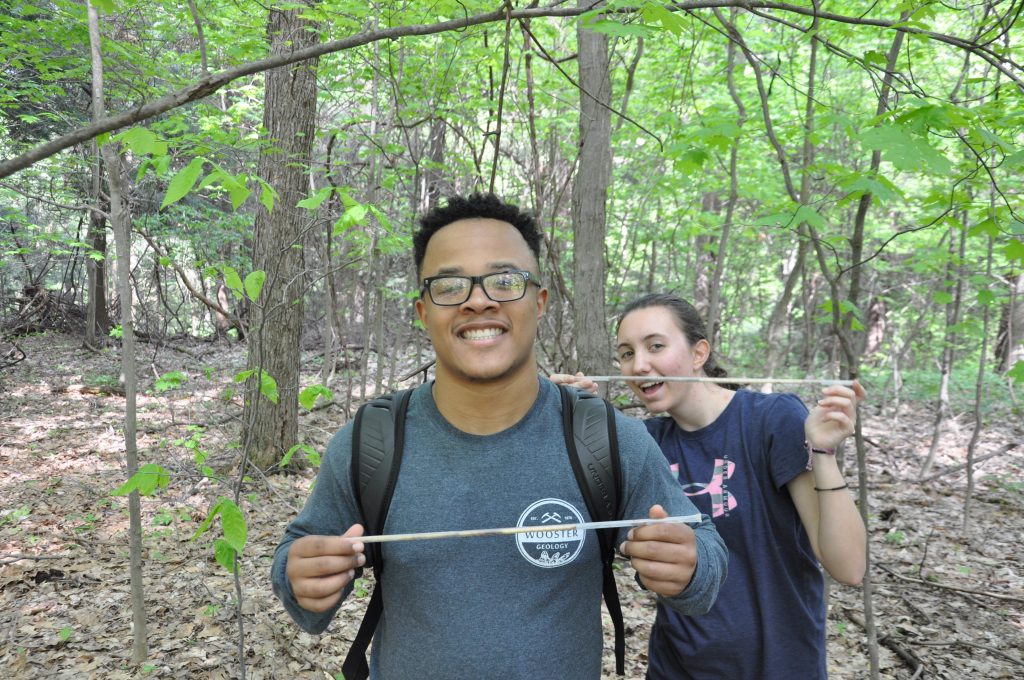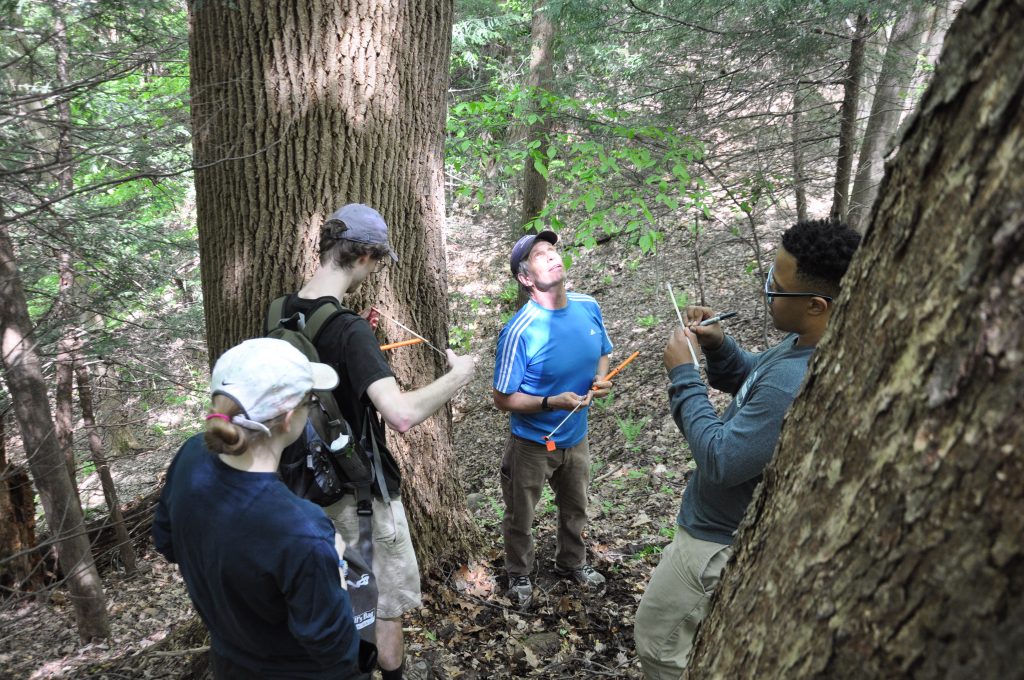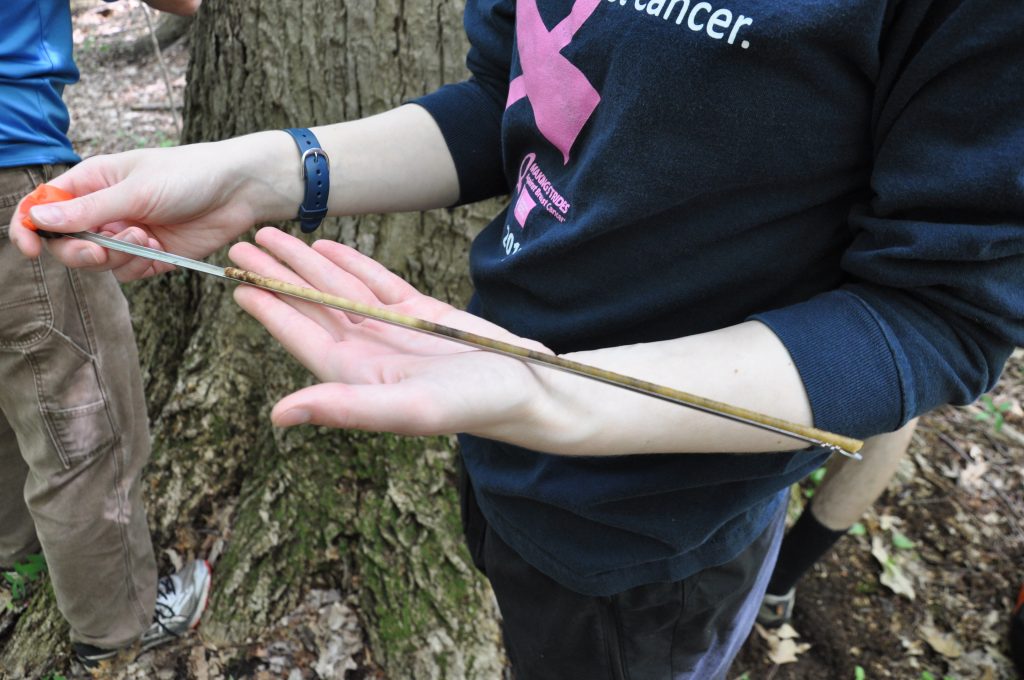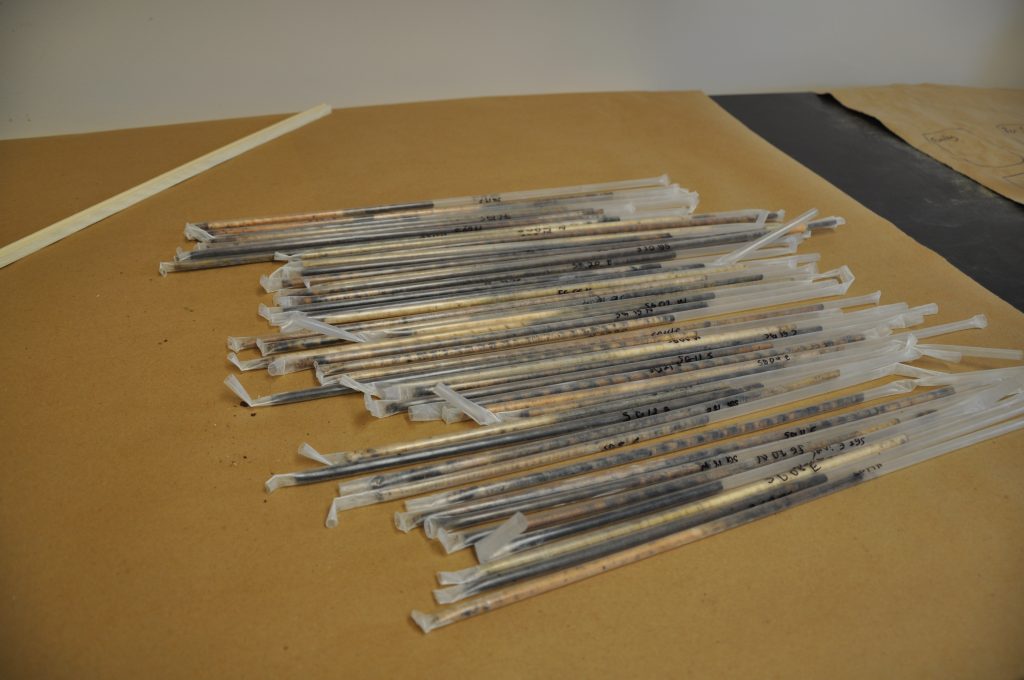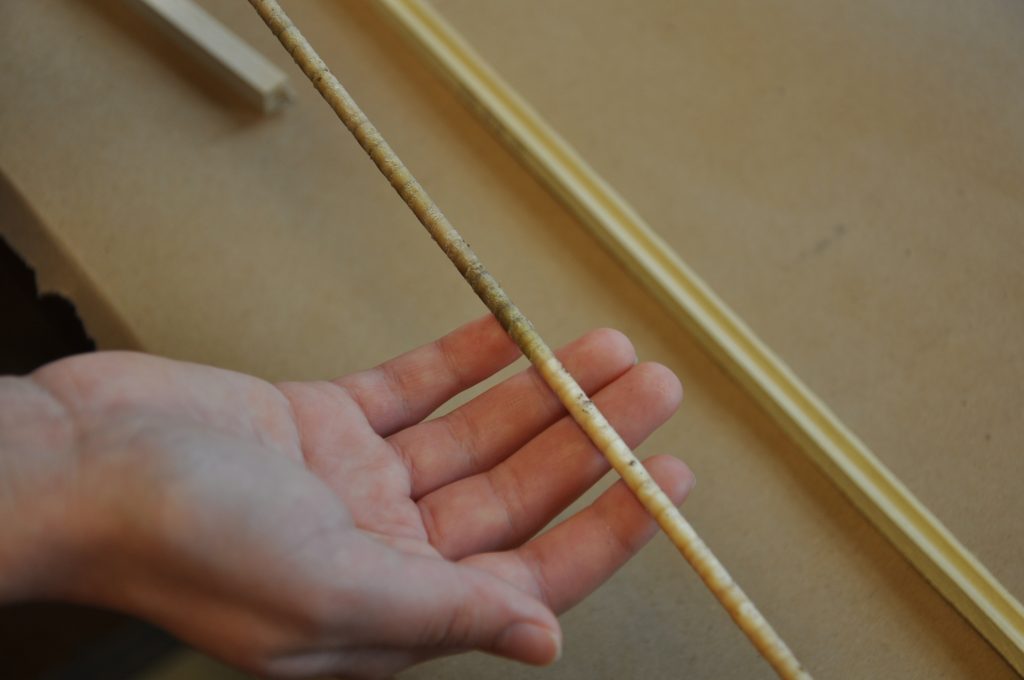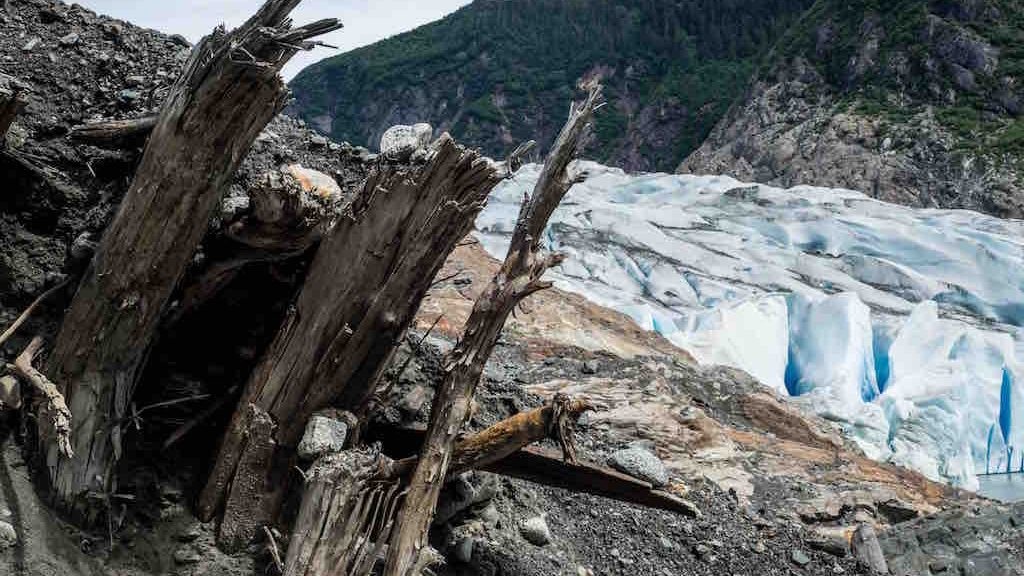Guest Bloggers: Lilly Hinkley and Tyrell Cooper
Tyrell, Lilly, Nick and Dr. Wiles of Wooster’s Tree Ring Lab (WTRL) were in Juneau and Hoonah, Alaska working in collaboration with the Alaskan Youth Stewards (AYS) in order to extend our tree ring chronologies. Once we collect the tree cores, the WTRL group will head back to The College of Wooster to prep and measure the cores and do a climatic analysis on them to try and connect the data with some of the Tlingit oral histories we learned about during our time.
Nick, Tyrell and Lilly at the Mendenhall Glacier ice margin.
Day 1
Tyrell and Lilly safely landed in Juneau. We fueled up and then went on a short walk around Mendenhall Glacier Lake where we saw a triple sun dog – a sign of good luck as we embarked on our journey in Alaska.
We met up with a fellow dendrochronologist, Markus Stoffel (left), along with his family who are from Switzerland. We also met up with another colleague, Ben Gaglioti (second from left) who works as a researcher at University of Alaska Fairbanks. Ben joined us while we were in Hoonah as well.
Lilly and Tyrell in front of Nugget Falls. Which pours from

